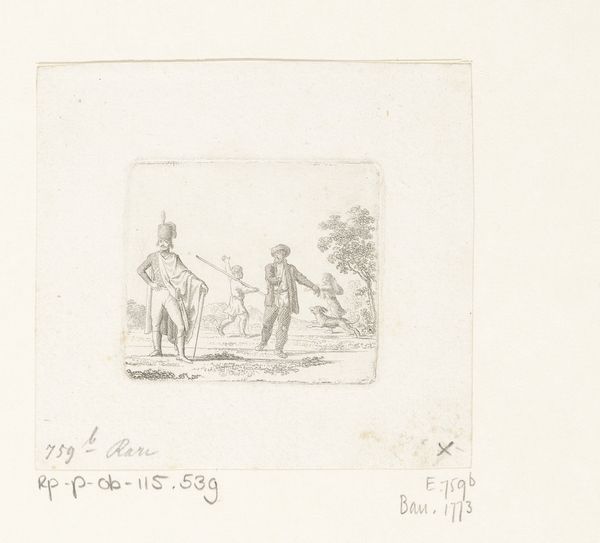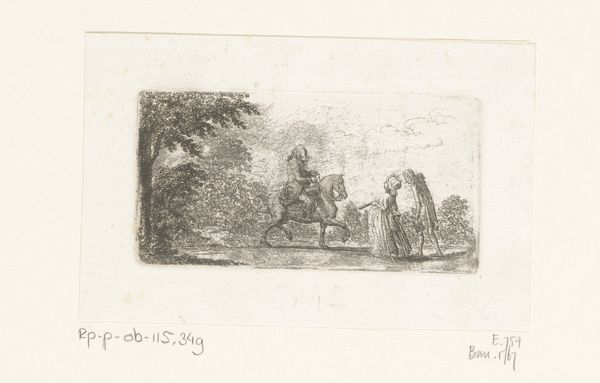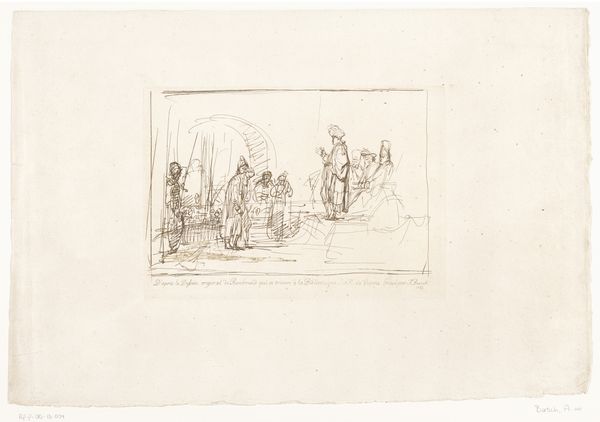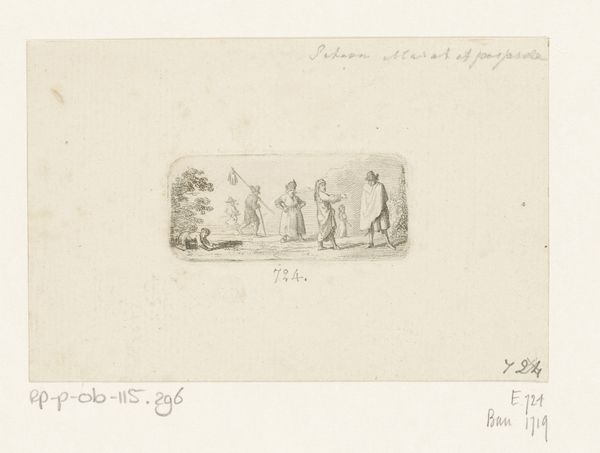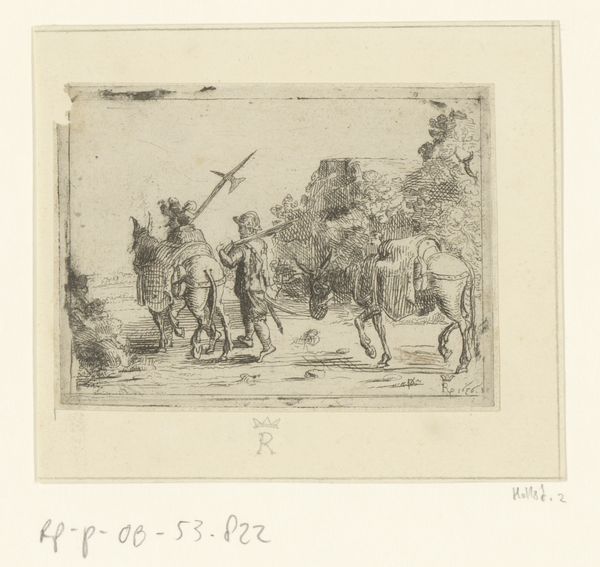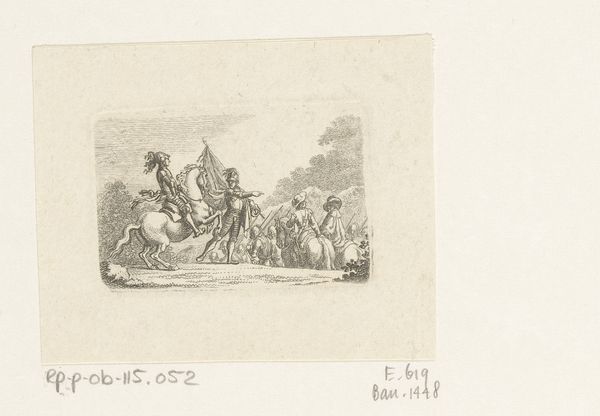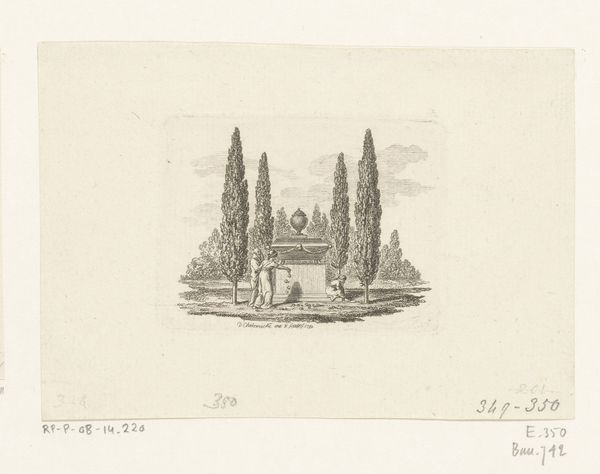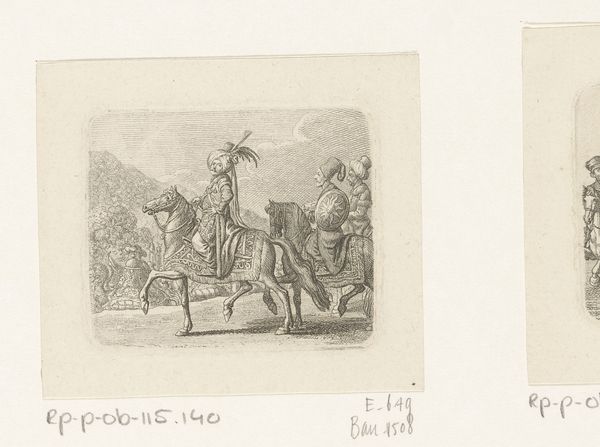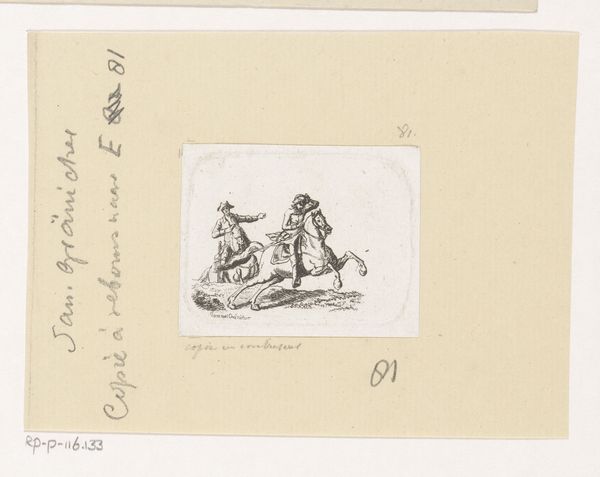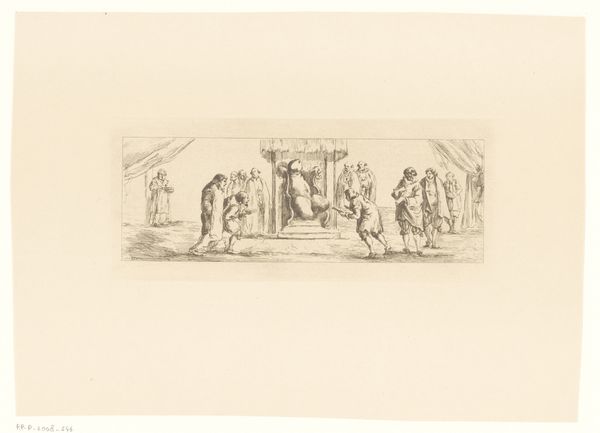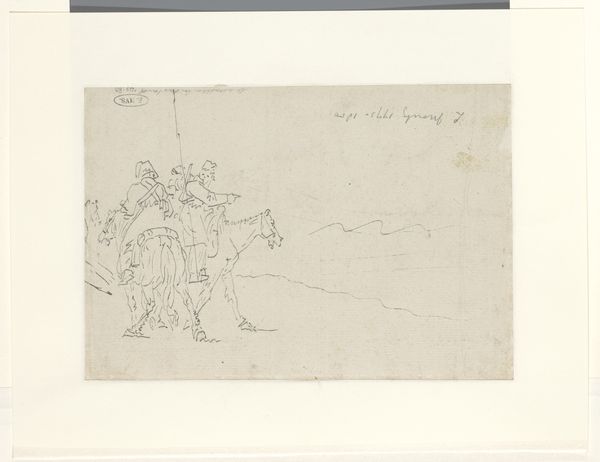
print, etching, engraving
#
portrait
#
narrative-art
# print
#
etching
#
dog
#
old engraving style
#
etching
#
figuration
#
romanticism
#
line
#
genre-painting
#
history-painting
#
engraving
Dimensions: height 46 mm, width 45 mm
Copyright: Rijks Museum: Open Domain
Curator: This etching by Daniel Nikolaus Chodowiecki, made in 1794, is titled "Verschillende types naast een hek," which translates to "Different Types Beside a Fence." Editor: It’s remarkably delicate. I’m drawn to the line work and the seemingly mundane subject; figures by a fence, a touch melancholic almost. Curator: Chodowiecki was deeply invested in portraying the social strata of his time. Prints like these allowed for wider dissemination of social commentary. Note the detail given to each figure—clothing, posture, these signify their place. Editor: Precisely. I am keen on how etching enabled Chodowiecki to mass produce images, democratizing art while meticulously attending to the subtleties of attire and even facial expressions, embedding social signifiers directly into the material. How accessible would prints like these have been? Curator: They were relatively accessible, yes, and often used in publications, spreading ideas alongside images. It's intriguing to consider the role such images played in shaping public perception, isn't it? The museum context changes the way we engage with these. Editor: Indeed. The museum as a context frames these prints now less as utilitarian tools and more as artifacts embedded within a complex material and historical web. Considering its status as print, its function becomes ambiguous—high art? Popular culture? Both, inevitably. I am taken by how it blurs boundaries, making us rethink the conventional definitions that often categorize it within art history. Curator: I agree completely. His attention to the subtleties of class and character are telling. His work encouraged people to see themselves reflected in art, and, maybe more importantly, see others as well. Editor: It makes you think about who had access to such items, what inks and papers were used in this period, and how distribution might reflect networks of power and commodity. Curator: Thinking about Chodowiecki’s place in the late 18th century reminds me how much art functions within, and reflects, societal structures. Editor: Absolutely, analyzing how art, labor, and materials intertwine enables a deeper comprehension of artwork's intricate layers and social impact.
Comments
No comments
Be the first to comment and join the conversation on the ultimate creative platform.
